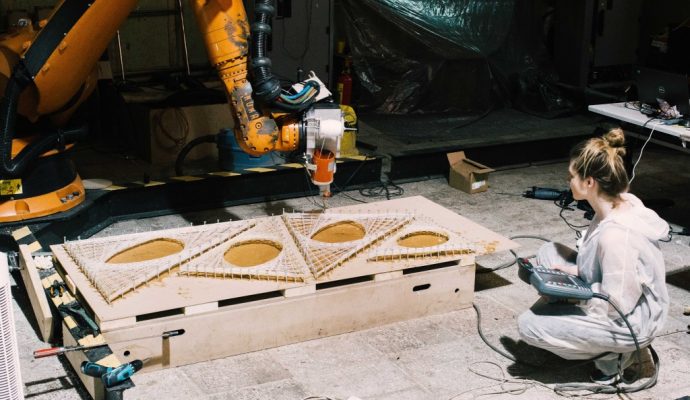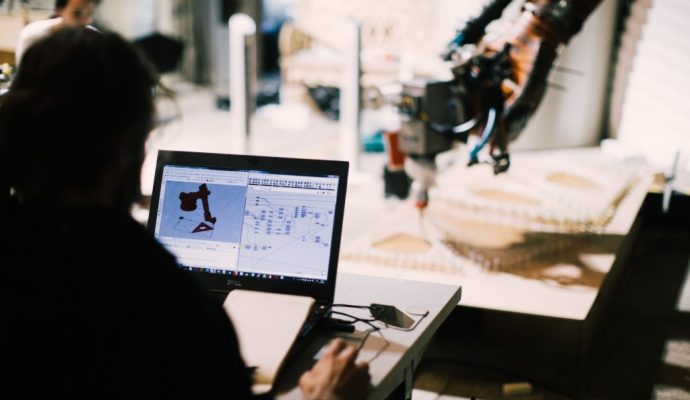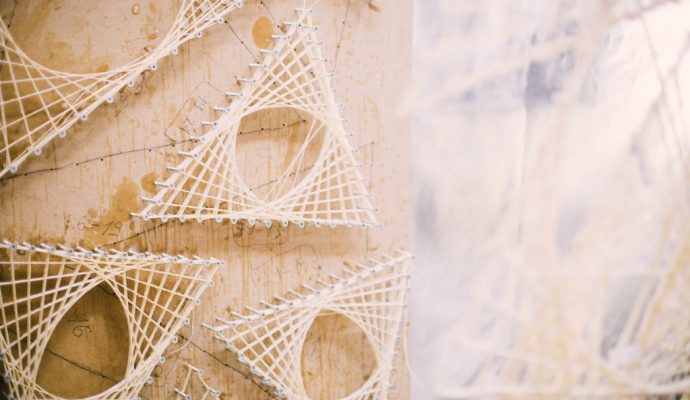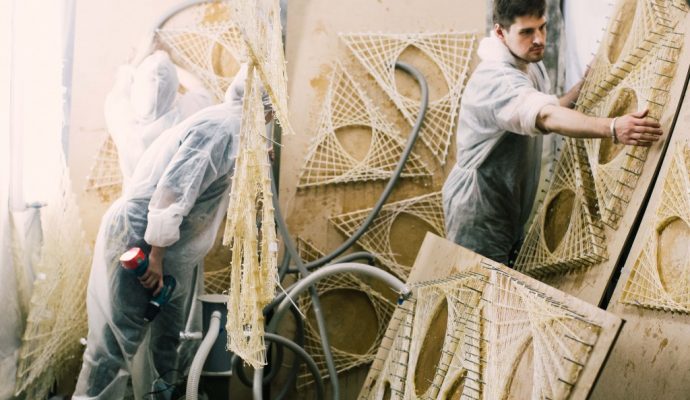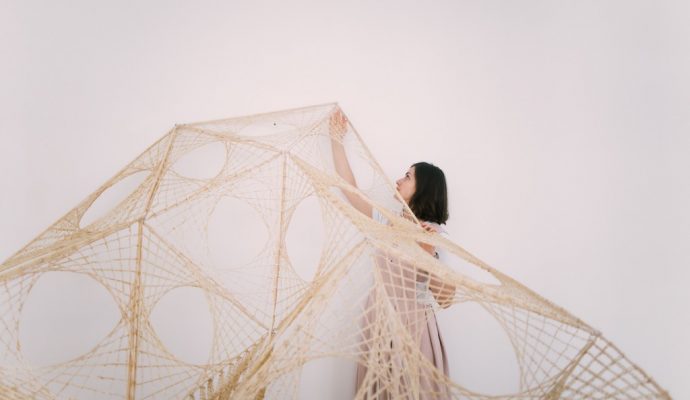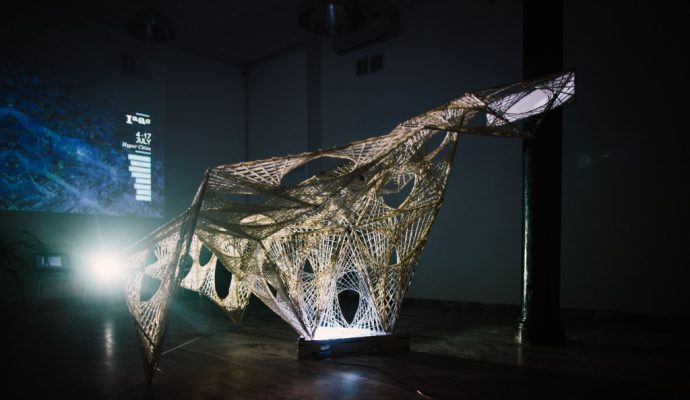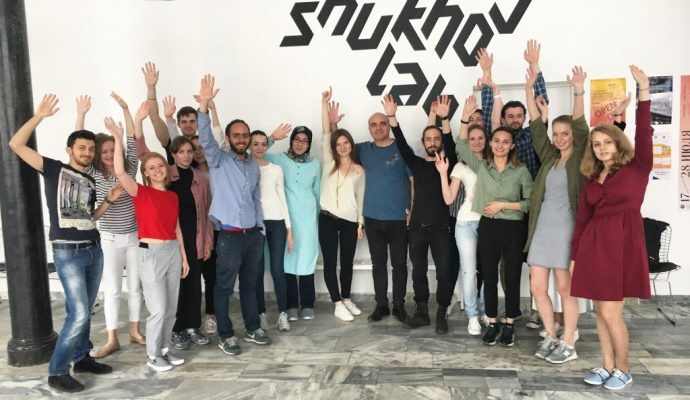Robotically Woven Structures at IAAC Global Summer School Moscow
This summer the Moscow IAAC Global Summer School participants, led by Maria Kuptsova, Elena Mitrofanova and Ivan Mitrofanov with the advisory of Vicente Guallart, have been investigating new computational and fabrication strategies for production of advanced design solutions for the activation of the public space.
Learning both about software and hardware, students have incorporated physical material research and form-finding strategies within digital design and fabrication methods.
The final goal of the course has been the design and fabrication of an urban element in 1:1 scale, which could be implemented in the public space of the city of Moscow.
Proposing a use of sustainable organic materials for the network of urban elements, the project “Interlace 0” investigates the capabilities of natural cotton fibers as a tensile material and bioplastic as binding and compressing material.
The structure is made of two parts: a temporary part, made of the bio-composite fibrous structure, and a permanent part, made by the interface system for recording and representing the information collected on site.
The collected data are stored in the system to form the future generation of the structure, as well as represented in an interactive system to create an open transparent interface: as the user enters the zone around the urban element, the saturation of built-in light is rising and the colour turns to warmer shades.
The physical structure represents a continuous model that was discretised to a number of panels, each of them customised through the weaving by an industrial robotic arm. This research showcases the potential of computational design and construction through the incorporation of structural capacities, material behaviour, and fabrication logics.
«Interlace 0» is a project by IAAC – Institute for Advanced Architecture of Catalonia, GSS MSC – Global Summer School Moscow 2017 in collaboration with Shukhov Lab of HSE Graduate School of Urbanism.
